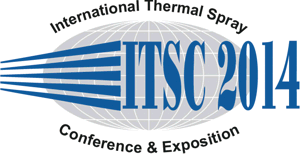
|
3858 |
|
Thursday, May 22, 2014, Hall H1 11:20 AM Automotive Industry 2 |
|
Investigation of HVOF-sprayed (Ti,Mo)(C,N)-Ni hardmetal coatings for static friction applications |
|
Lutz-Michael Berger* / Fraunhofer Institute for Material and Beam Technology, Germany Matthias Gräfensteiner / Chemnitz University of Technology, Department of Engineering Design, Germany Eberhard Leidich/ Chemnitz University of Technology, Department of Engineering , Germany Irina Shakhverdova/ Fraunhofer IWS, Germany Saskia Schiefer/ Chemnitz University of Technology, Institute of Production Measuring Technology and Quality Assurance, Germany Marco Gerlach/ Chemnitz University of Technology, Institute of Production Measuring Technology and Quality Assurance, Germany |
|
Hardmetal coatings sprayed by high velocity oxy-fuel (HVOF) spraying are intensively studied for wear applications, in particular for lubricated and dry sliding applications, were commonly a low coefficient of friction is required. Frictionally engaged joints are widely used in mechanical engineering and require a high static friction. Thermally sprayed hardmetal coatings have a high potential to fulfil this requirement. As part of a systematic study in this work the static coefficient of friction of as-sprayed (Ti,Mo)(C,N)-Ni hardmetal coatings in torsion experiments with different contact pressures was studied are reported in detail. The coatings were sprayed from an experimental feedstock powder with a liquid-fuelled HVOF gun. The form, orientation and the geometric characteristics of the friction surface have been investigated. The slipping curves have been determined and a static coefficient of friction ¼max up to 0.80 was measured. The results show a decreasing standard deviation with increasing nominal contact pressure. After the slipping experiments, both the coating surfaces and the metallographically prepared cross sections have been studied in detail. It has been found that material form the counterpart has been transferred to coating surface. |